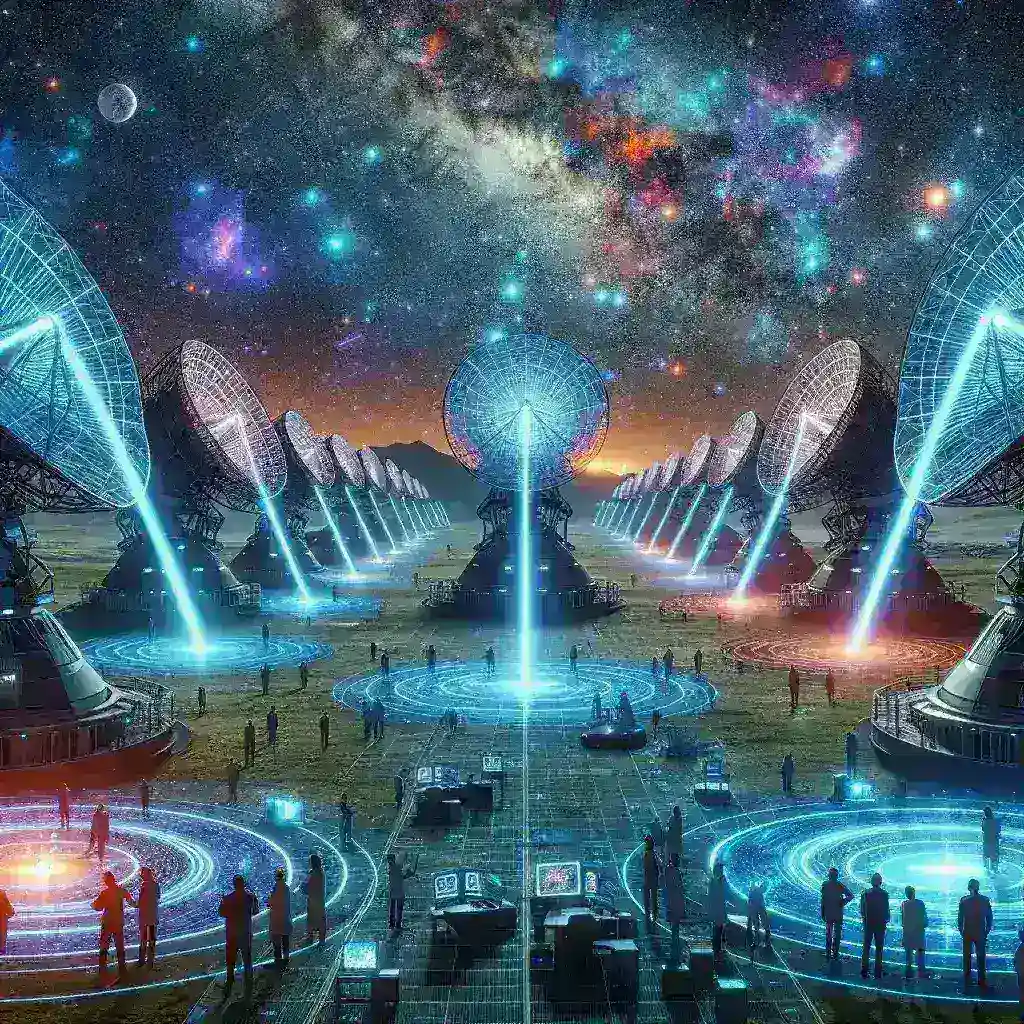
Introduction
In recent years, the intersection of artificial intelligence (AI) and astronomy has sparked a revolution in our understanding of the universe. AI enhanced astronomical surveys are at the forefront of identifying habitable zones in distant star systems. This transformative approach not only accelerates the pace of discovery but also enhances the precision of our searches, paving the way for potentially finding life beyond Earth. This article delves into the intricacies of these advanced surveys, their historical context, applications, and future implications.
The Historical Context of Astronomical Surveys
The quest to find exoplanets has a rich history. The first confirmed detection of an exoplanet orbiting a sun-like star occurred in 1995, sparking interest in the search for habitable worlds. Early methods relied heavily on ground-based telescopes and simple statistical models to identify potential planets. These initial surveys had limitations in scope and accuracy, often missing smaller planets situated in the elusive habitable zone, where conditions might be just right for life as we know it.
The Evolution of Technology
With advancements in technology, astronomers began utilizing space-based telescopes such as the Kepler Space Telescope. Launched in 2009, Kepler significantly increased the number of discovered exoplanets, identifying over 2,300 candidates. However, analyzing the vast quantity of data produced by such missions posed a substantial challenge. The introduction of AI has emerged as a game-changer, enabling astronomers to process and interpret this data more efficiently.
Understanding Habitable Zones
A habitable zone, often referred to as the “Goldilocks zone,” is the region around a star where conditions may be suitable for liquid water to exist on a planet’s surface. This concept is crucial for the search for extraterrestrial life. However, defining habitable zones is complex and influenced by several factors:
- Star Type: Different stars emit varying levels of radiation and heat.
- Planet’s Atmosphere: The presence and composition of an atmosphere can significantly affect surface conditions.
- Planetary Conditions: Factors such as size, mass, and geological activity play a critical role.
AI’s Role in Mapping Habitable Zones
AI algorithms have transformed our ability to analyze and predict habitable zones. Machine learning models can analyze vast datasets from astronomical surveys to identify patterns that might indicate the presence of planets within habitable zones. By using training data from known exoplanets, these models can refine their predictions and enhance the accuracy of future searches.
Applications of AI in Astronomical Surveys
Exoplanet Detection
AI has become instrumental in detecting exoplanets through various methods. One such method is the transit method, where astronomers observe the dimming of starlight as planets pass in front of their host stars. AI algorithms can identify these minute changes in brightness, flagging potential candidates for further investigation.
Data Analysis
The amount of data generated by astronomical surveys is staggering. AI can sift through this data, identifying patterns and anomalies that human analysts might overlook. By automating the process, AI significantly reduces the time required to analyze data and increases the chances of discovering new exoplanets.
Predictive Modeling
AI can also create predictive models that simulate different planetary environments, helping astronomers understand the potential habitability of discovered exoplanets. By inputting various parameters, researchers can assess which conditions might support life and prioritize targets for follow-up observations.
Pros and Cons of AI Enhanced Surveys
Pros
- Efficiency: AI drastically reduces the time taken to analyze astronomical data.
- Accuracy: Machine learning models can improve the precision of planetary detection.
- Scalability: AI can process and analyze datasets at a scale unmanageable for traditional methods.
Cons
- Dependence on Data Quality: AI models are only as good as the data they are trained on.
- Interpretation Challenges: Understanding AI-generated predictions requires human expertise.
- Ethical Concerns: The use of AI raises questions about data privacy and the implications of automated decision-making.
Real-World Examples
NASA’s TESS Mission
The Transiting Exoplanet Survey Satellite (TESS) launched in 2018, utilizes AI to identify exoplanets by monitoring over 200,000 stars. By applying machine learning algorithms, TESS efficiently analyzes light curves and identifies potential transits, contributing to our understanding of habitable zones.
Open Exoplanet Catalogue
Another significant initiative is the Open Exoplanet Catalogue, an open-source database that allows astronomers to share and analyze exoplanet data collaboratively. This project leverages AI to enhance the accuracy of data classification and increase accessibility for researchers worldwide.
Future Predictions
The future of AI enhanced astronomical surveys looks promising. As technology advances, we can expect more sophisticated AI algorithms capable of uncovering even the faintest signals from distant star systems. The integration of additional data sources, such as spectroscopy and planetary imaging, will further enhance our understanding of potential habitable zones.
Interdisciplinary Collaborations
Furthermore, interdisciplinary collaborations between astronomers, data scientists, and AI researchers will likely lead to innovative approaches in the search for life beyond Earth. By combining expertise from various fields, we can develop novel methodologies that push the boundaries of our current knowledge.
Cultural Relevance
The search for habitable zones and extraterrestrial life resonates deeply within our culture. From science fiction literature to blockbuster films, the idea of life beyond our planet captivates the human imagination. As AI enhances our ability to explore the cosmos, it also fuels the curiosity that drives scientific inquiry and philosophical debate about our place in the universe.
Conclusion
AI enhanced astronomical surveys represent a pivotal advancement in our quest to find habitable zones in distant star systems. By leveraging the power of artificial intelligence, astronomers are not only increasing the efficiency and accuracy of their searches but also opening new frontiers in our understanding of the universe. As we continue to explore the cosmos, the integration of AI will undoubtedly play a crucial role in unraveling the mysteries of life beyond our planet. With each discovery, we inch closer to answering the profound question: Are we alone in the universe?
